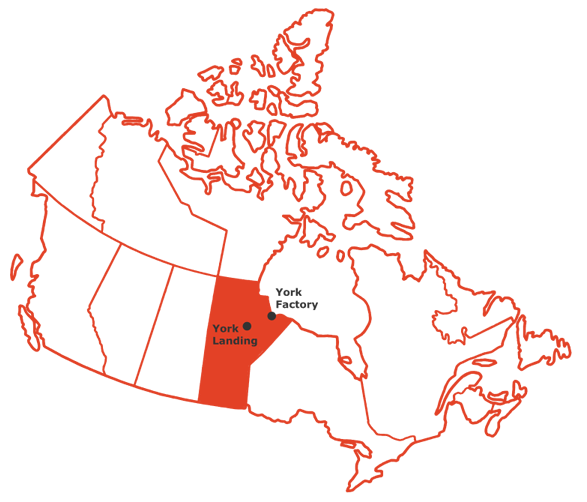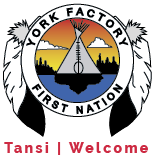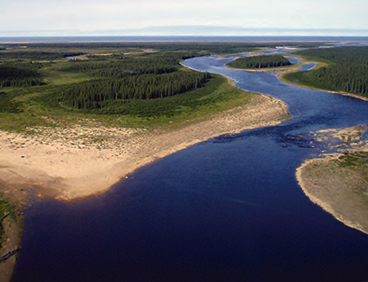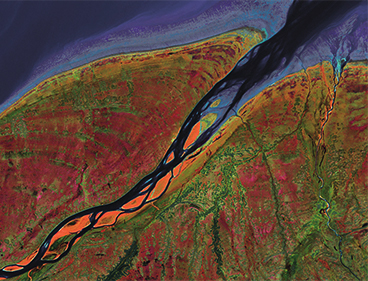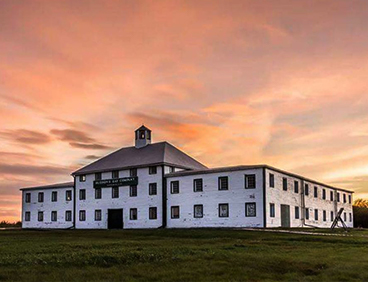Our History
Pre-Contact
The York Factory First Nation (YFFN) Ininéwak have lived on the land that is now northeastern Manitoba for thousands of years – since the glaciers melted. During this time, we developed an intimate relationship with the land that represents an unbroken cultural thread transmitted from our ancestors to current members of the community. To be Ininéwak was, and still is, to be part of an ancient tradition that mastered and specialized in life through the most challenging environments. Through our cultural teachings & practices, our relationship to the land has supported our health and well-being since before recorded history.
The Fur Trade – The YFFN Ininéwak & Hudson’s Bay Company
In the 1600s, European explorers and traders arrived in our territory. The Hudson’s Bay Company (HBC) and York Factory were established becoming a hub of the North American fur trade – an economy that was built on the knowledge and skills of our people. It was the Ininéwak who were able to harvest animals, prepare furs, secure food, and navigate the waterways of our territories. For more than a century the European visitors were stationed only along the Hudson Bay coastline, collecting and shipping materials. Their knowledge of inland areas and transportation routes evolved gradually as explorers and traders learned from our ancestors. Our people ultimately shaped and were forever shaped by the ‘fur trade’.
The Treaty Era
In 1910, our people at York Factory signed Treaty 5 Adhesion, a Nation-to-Nation agreement with Canada. Since that time, Treaty 5 has been consistently forgotten by Canada leading to a period of increasing government influence in the lives of our people. In 1930, the Natural Resources Transfer Act delegated responsibility for governing natural resources to the provincial government. The Province of Manitoba then introduced the Registered Trapline (RTL) System in the 1940s – a provincial system of fur-bearer management that our people are obligated to follow to this day. Our land had now been defined as “Crown Land” to be managed by outside bureaucrats.
For as long as we can remember our people exercised our own form of ‘stewardship’ by distributing our harvesting efforts, letting resource areas rest as needed, following cultural customs of showing respect and reciprocity, and avoiding wasting gifts from Askiy (defined as the whole of the land, water, plants, animals, people, elements, and beings, seen and unseen). To this day, our lives continue to be significantly influenced by Treaty 5 and the laws of the provincial and federal governments.
The Relocation
In the fall of 1956, representatives from Indian Affairs traveled to York Factory and told our people of plans to move us inland to York Landing (Kawéchiwásik). Sales at the York Factory trading post had fallen quite dramatically compared to previous years, and therefore the Hudson’s Bay Company (HBC) decided to close its operations at that location indefinitely. The HBC depot closed its doors in York Factory on July 22, 1957. Our members were taken aback at the idea of being relocated to York Landing because we already had everything we needed to survive. This forced relocation separated our people from the land that held our history, homes, relations, and even the graves of our loved ones. This collective trauma was amplified by the effects of residential schools and the loss of available harvesting and trapping areas.
Rebuilding the Community
York Factory First Nation (YFFN) members who relocated to York Landing found themselves in a new environment with different plants and wildlife, limited access to resources, hydro-electric development projects, and increased pressure to send their children to residential schools. The men and women who arrived at York Landing in the summer and fall of 1957 immediately began to build cabins and establish their new community.
Despite the challenges of the past, YFFN is now working to rebuild our Nation – politically, economically, spiritually and culturally. We are pressing current governments to recognize and respect our existing Aboriginal and Treaty Rights, including promises to Reserve land made over 100 years ago. We are pursuing economic development to reduce our dependence on government payments and raise the prosperity of our people. We are strengthening our governance, self-determination, and presence on the land. We are maintaining and strengthening our language, culture, and connection to our ancestral lands along the Hudson Bay coast. We are reconciling and healing our wounds from the last century. We are rebuilding our community, together.
